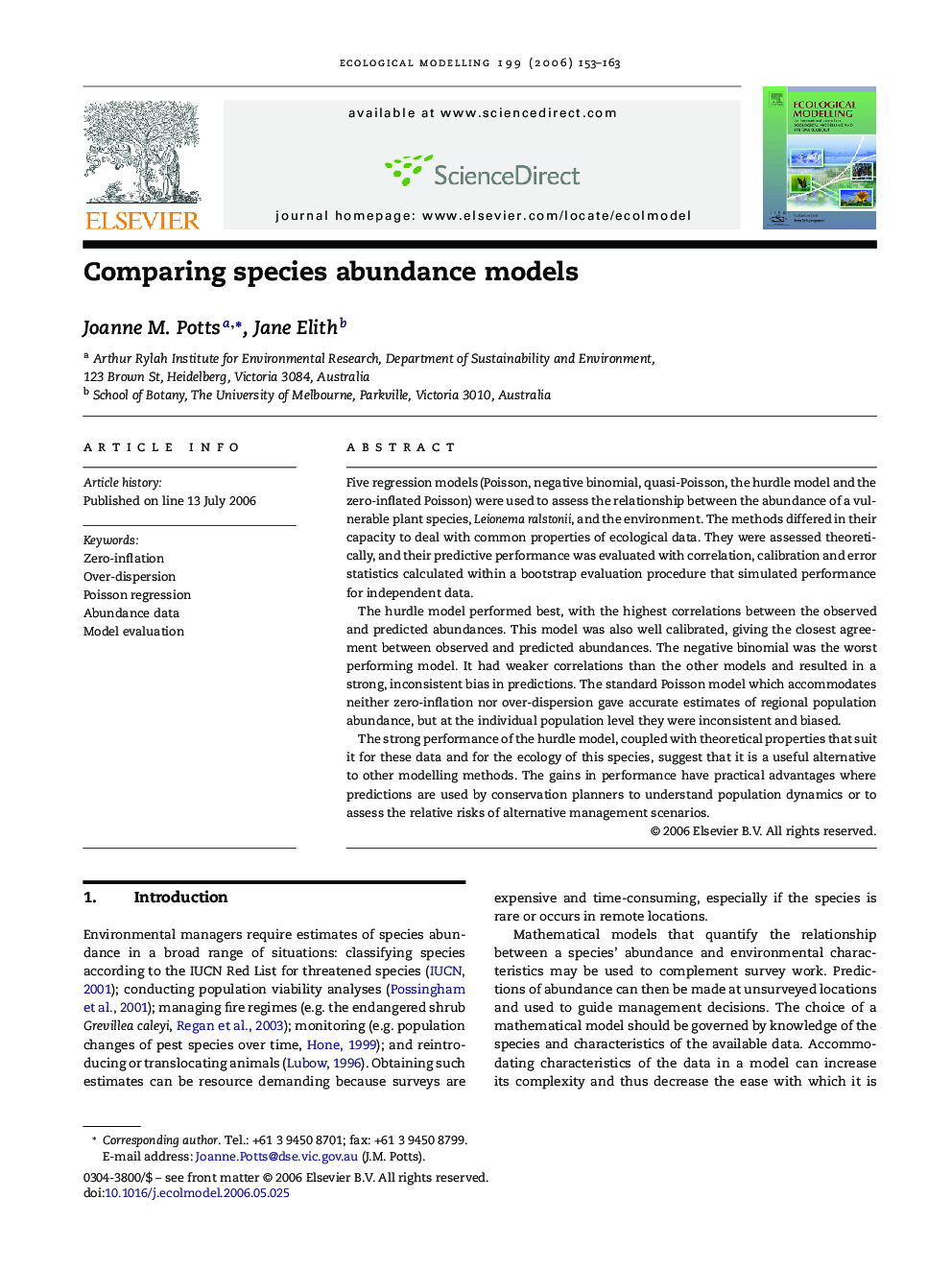| کد مقاله | کد نشریه | سال انتشار | مقاله انگلیسی | نسخه تمام متن |
|---|---|---|---|---|
| 4378989 | 1303503 | 2006 | 11 صفحه PDF | دانلود رایگان |

Five regression models (Poisson, negative binomial, quasi-Poisson, the hurdle model and the zero-inflated Poisson) were used to assess the relationship between the abundance of a vulnerable plant species, Leionema ralstonii, and the environment. The methods differed in their capacity to deal with common properties of ecological data. They were assessed theoretically, and their predictive performance was evaluated with correlation, calibration and error statistics calculated within a bootstrap evaluation procedure that simulated performance for independent data.The hurdle model performed best, with the highest correlations between the observed and predicted abundances. This model was also well calibrated, giving the closest agreement between observed and predicted abundances. The negative binomial was the worst performing model. It had weaker correlations than the other models and resulted in a strong, inconsistent bias in predictions. The standard Poisson model which accommodates neither zero-inflation nor over-dispersion gave accurate estimates of regional population abundance, but at the individual population level they were inconsistent and biased.The strong performance of the hurdle model, coupled with theoretical properties that suit it for these data and for the ecology of this species, suggest that it is a useful alternative to other modelling methods. The gains in performance have practical advantages where predictions are used by conservation planners to understand population dynamics or to assess the relative risks of alternative management scenarios.
Journal: Ecological Modelling - Volume 199, Issue 2, 16 November 2006, Pages 153–163